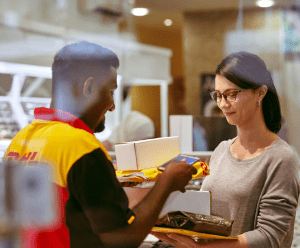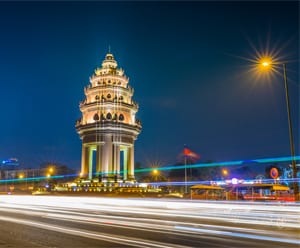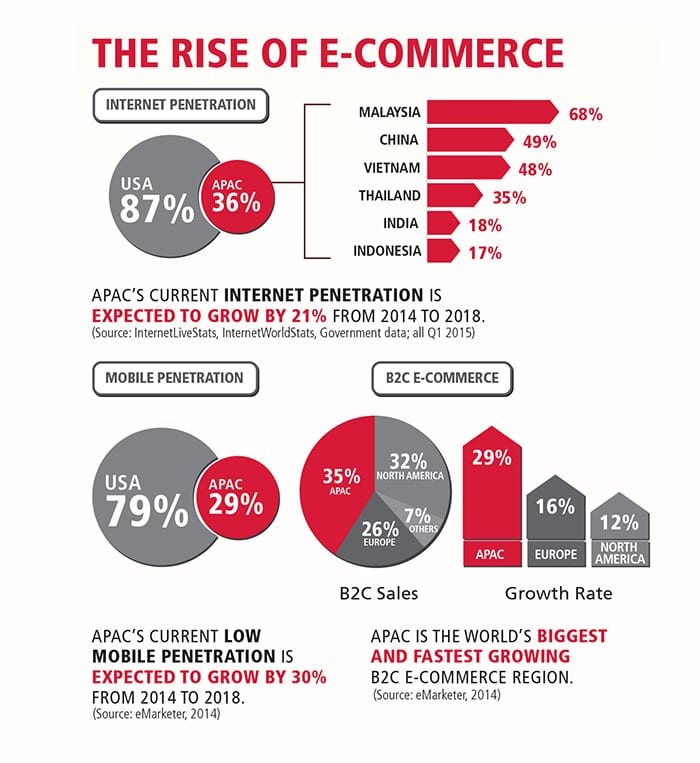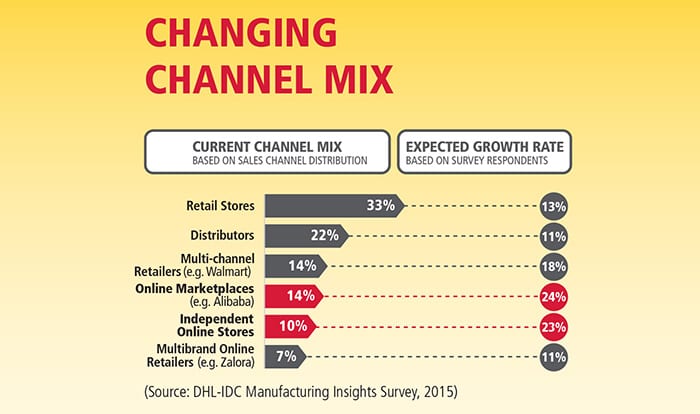
What’s next for e-commerce in Asia?

Key takeaways
- E-commerce is about to undergo a second wave of growth in Asia
- Although e-commerce has evolved differently in every country, innovations can often be adapted across multiple markets
- Logistics and technology partnerships are the best way to tackle the customs and volume issues associated with cross-border e-commerce
E-commerce has already transformed trade in Asia – but its true impact has yet to come. According to Demystifying Asia Pacific Trade Trends, a report compiled by DHL, e-commerce is on the cusp of a second wave of growth throughout the Asia Pacific region. But the pace and character of this growth will look vastly different from country to country.
“There is no ‘one-size-fits-all’ approach to e-commerce: it evolves according to the unique habits and preferences of local consumers, and each country requires a different approach,” says Malcolm Monteiro, CEO, DHL eCommerce Asia Pacific. “The only thing that remains constant in all Asia Pacific markets is that e-commerce is going to grow, and fast.”
The total online retail revenues of Australia, China, India, Japan, and South Korea – arguably Asia Pacific’s most advanced e-commerce markets – are expected to nearly double to US$1.4 trillion between 2015 and 2020. Yet delve a little deeper and the differences in growth and opportunity between markets become clear. India’s e-commerce turnover, for example, is not only equivalent to that of Australia and South Korea combined, but looks set to grow more than fivefold by 2020.
“Many countries have found themselves playing catch-up with the taxation, market regulation, and information security implications of e-commerce.”
“According to the report, China overtook the U.S. as the world’s largest e-commerce market last year. However, with India’s internet penetration rate of 30 percent, this shows a huge growth opportunity for India to become one of the largest growing e-commerce markets in the region,” Monteiro says. “However, e-commerce in India requires specific solutions – for instance, consumers in India prefer cash-based transactions – therefore a solution to provide ease of transaction and convenience to the consumer is crucial in order to meet the needs of the e-commerce market in India.”
Some businesses have, however, latched on to those challenges as opportunities for innovation. Mobile wallets, for example, let users preload money onto their smartphones from bank accounts, credit or debit cards, and other sources. With mobile wallets, merchants minimize their security risks and manual processing costs, while consumers retain the comfort of “cash on delivery” payments.
Equally innovative approaches are being used to tackle traditional barriers to cross-border e-commerce. In China, government-affiliated platforms like Kuajingtong offer local consumers reduced duty rates and faster delivery times for around 10,000 products from 30 overseas suppliers. Such platforms promise to reduce customs and regulatory complexity – an issue cited by 35% of Asian businesses as a challenge to cross-border trade.
“Many countries have found themselves playing catch-up with the taxation, market regulation, and information security implications of e-commerce,” Monteiro says. “China, India, and Indonesia have all recently updated their e-commerce taxation policies, and businesses can expect other countries to follow suit with further regulation. Rather than struggling to keep up with these changes, merchants are better off working with e-commerce logistics partners who can handle customs and compliance on their behalf – no matter what country they’re shipping to.”
Economies of scale allow logistics firms like DHL to simplify more than just customs inspections. 15% of Asian businesses struggle to maintain cross-border e-commerce because their volumes are simply too small – including one Chinese consumer electronics producer seeking to expand into India. Rather than build its own supply chain from scratch, the firm partnered with DHL to ship its goods via air freight; clear customs with the help of DHL’s licensed in-house agents; and deliver to consumers via Blue Dart.
“Don’t feel the need to go solo when it comes to e-commerce in Asia Pacific,” Monteiro advises. “The best strategy is to partner up – not just with logistics companies like DHL, but also with online marketplaces, payments providers, and even local government bodies. That way, merchants can stay focused on selecting the right channels and offers that will resonate most with local preferences, throughout Asia.”
To keep ahead in today’s changing business environment and to learn more about the trade trends within the region, get the Demystifying Asia Pacific Trade Trends report here. Some of these topics are tangibly showcased at the DHL Innovation Center.
MORE FROM THIS COLLECTION











 English
English